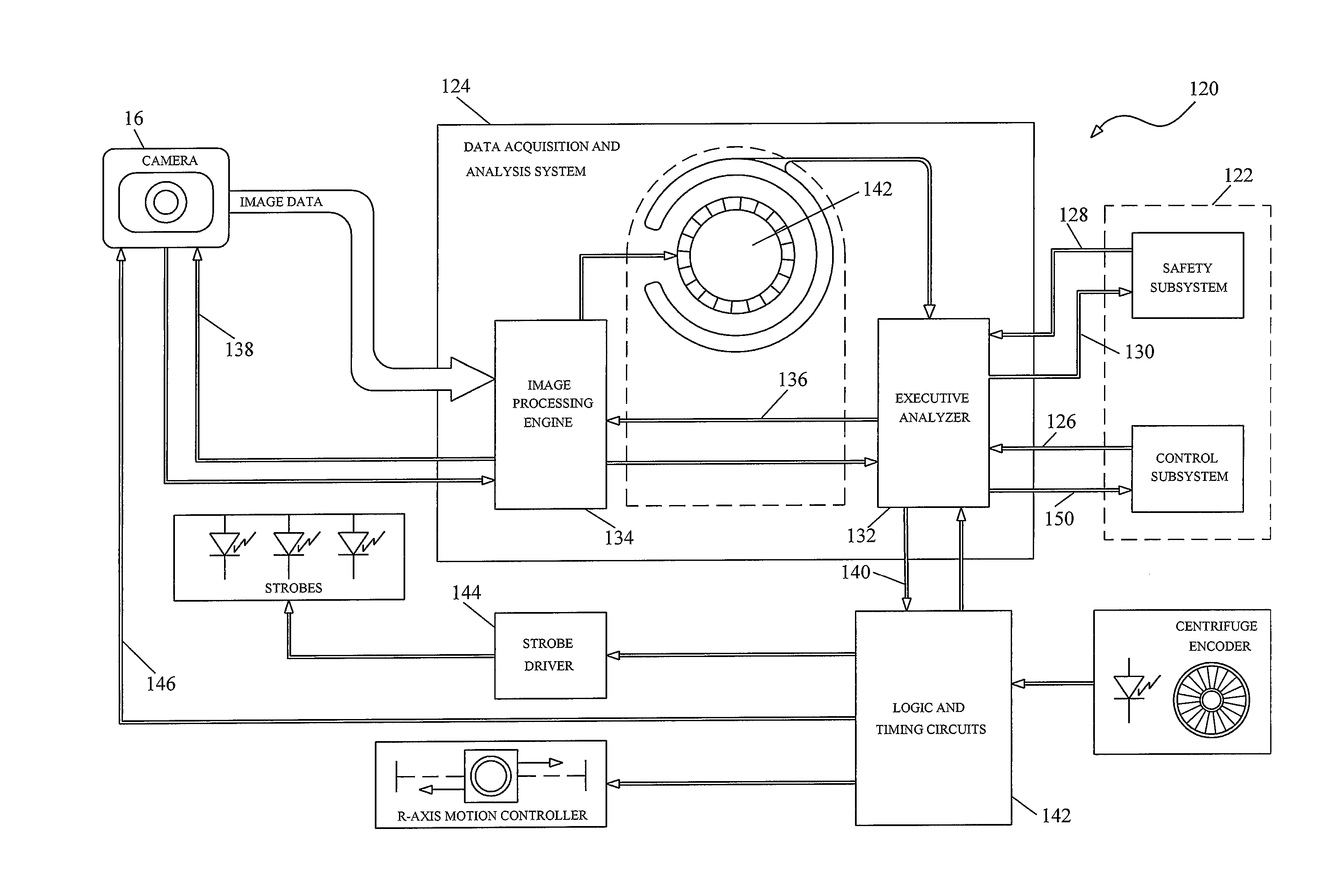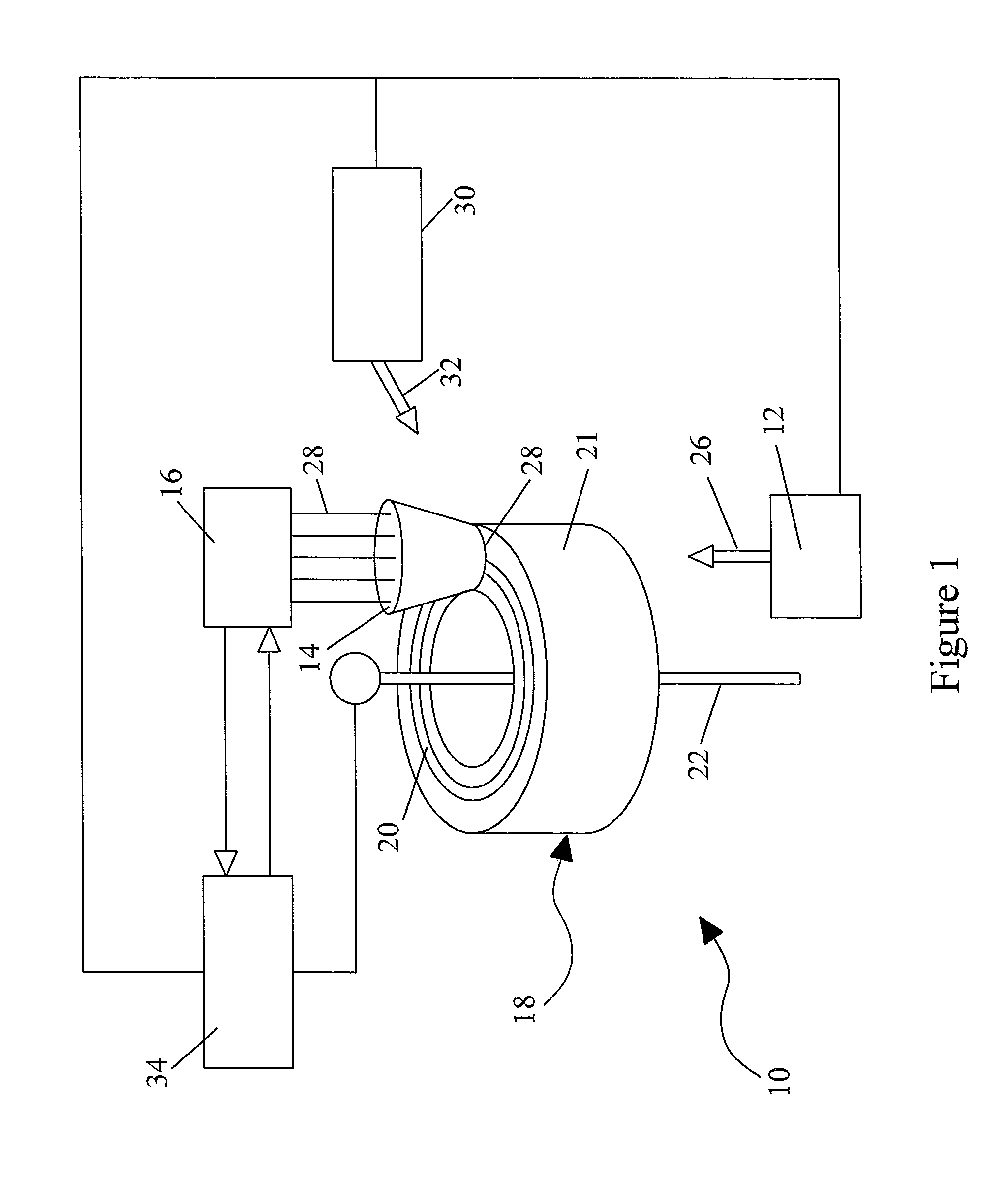System for Blood Separation with Shielded Extraction Port and Optical Control
a technology of shielded extraction and optical control, which is applied in the direction of separation processes, instruments, centrifuges, etc., can solve the problems of loss of certain blood components, no longer available for collection, and significantly decrease the efficiency so as to reduce the possibility of stagnation, reduce the volume of white blood cell collection, and increase the flow velocity
- Summary
- Abstract
- Description
- Claims
- Application Information
AI Technical Summary
Benefits of technology
Problems solved by technology
Method used
Image
Examples
Embodiment Construction
[0033]Referring to the drawings, like numerals indicate like elements and the same number appearing in more than one drawing refers to the same element. In addition, hereinafter, the following definitions apply:
[0034]The terms “light” and “electromagnetic radiation” are used synonymously. Light useful for the present invention includes gamma rays, X-rays, ultraviolet light, visible light, infrared light, microwaves, radio waves or any combination of these. “Separation axis” refers to the axis along which blood components having different densities are separated in a density centrifuge. As a separation chamber is rotated about a central rotation axis in a density centrifuge, the centrifugal force is directed along separation axes. Accordingly, a plurality of axes rotates about the central rotation axis of a density centrifuge.
[0035]FIG. 1 schematically illustrates an exemplary embodiment of a blood component separation device 10 with an optical monitoring system capable of measuring ...
PUM
| Property | Measurement | Unit |
|---|---|---|
| thickness | aaaaa | aaaaa |
| density | aaaaa | aaaaa |
| diameter | aaaaa | aaaaa |
Abstract
Description
Claims
Application Information
 Login to View More
Login to View More - R&D
- Intellectual Property
- Life Sciences
- Materials
- Tech Scout
- Unparalleled Data Quality
- Higher Quality Content
- 60% Fewer Hallucinations
Browse by: Latest US Patents, China's latest patents, Technical Efficacy Thesaurus, Application Domain, Technology Topic, Popular Technical Reports.
© 2025 PatSnap. All rights reserved.Legal|Privacy policy|Modern Slavery Act Transparency Statement|Sitemap|About US| Contact US: help@patsnap.com



